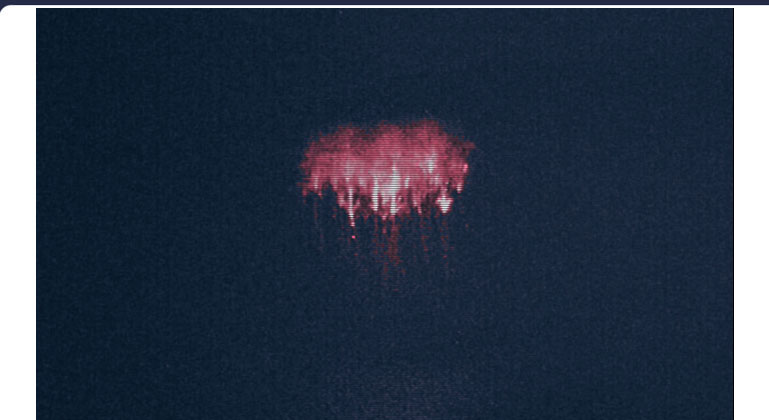




Auroral Flashes Above New Mexico
All-Sky Camera Captures Mysterious Flashes
by Nancy Atkinson for Universe Today
October 18, 2011
Every couple of weeks or so a strange flash appears on an all-sky camera that searches for meteors. What could it be? Take a look at the video above and maybe you can help solve the mystery.
"They are not iridium flares because they are stationary," said James Beauchamp, an amateur astronomer who hosts the meteor camera for Sandia National Labs and New Mexico State University, and who posted this video on You Tube. "And they are not geosynchronous satellites because the azimuth/elevation are too far North. They are reflective because they always happen just prior to or after sunrise/sunset. Whatever it is, it's slow and BIG."
Beauchamp says he sees a flash like this about once every month or so. Some are really bright like this one, and others are just small blinks.
"It would be awesome if this mystery was some cool unknown object or secret atmospheric/orbital activity, but the real answer is probably very disappointing," said Beauchamp in an email to Universe Today. He's guessing it is a satellite with a big, reflective panel that appears at the right place and time for a direct reflection from the sun to the camera.
And the five points that are [visible include] the object with the four corners overlaid by the software to show you what it triggered on," said Beauchamp. (corrected 12:45 pm CDT)
But the cool, mysterious part here, said Beauchamp, is that no one can figure out exactly which satellite it is. It likely is a "secret" spy satellite that the coordinates and overhead pass times aren't listed on places like Heavens Above or CalSky.
"When I posted the video, some of the high-caliber observers around the globe responded with 'Yeah, it's probably this or that type, but let's crunch some numbers to see if it is,'" Beauchamp said, but so far no one has come up with a satellite that fits all the criteria.
Beauchamp has come up with a few 'Sherlock Holmes' facts that narrows down a few things:
Unlike most flares, it is stationary when it flashes, which means a high earth orbit, or elliptical one. Most satellites are in low Earth orbit, which means they are moving fast, and this is not one of them, so it is not a GPS, Iridium, or research satellite.
The flashes always occur within a couple of hours of sunrise/sunset - which means they are in direct sunlight. So it's not some strange atmospheric thing.
The elevation over the earth is too far North to be a satellite in geosynchronous orbit. This particular flash in the video above was about +30 degrees.
Cross-check with freeware such as Orbitron and NORAD TLE's show no satellites around that would make such a flare - e.g. they are all LEO or not in the line of sight and general direction.
"A lot of people see these flashes and it tends to freak them out a bit," Beauchamp said. But he considers it a fun mystery to try and solve.
Can you help?
Analysis
Sure, I can help! I've discovered an answer to this repeating luminosity, as interrelated among so many other unusual atmospheric events now unfolding.
I do not think this is an extraterrestrial spacecraft. The mystery of this repeating flash is revealed by its fixed location in the high-atmosphere - at a convergence point of nonlinear standing waves.
The high-atmospheric auroral phenomenon of red sprites have been well documented as brief discharges occurring over intense thunderstorm activity, yet the increasing occurrence of stationary columnar sprites that glow brightly for extended periods of hours has been reported recently in Xiamen, China.
The repeating occurrence of these very large circular flashes of light above this specific area of the New Mexico night sky suggests a natural atmospheric origin connected with mounting Earth changes.
The large scale of these flashes denies the possibility of their being caused by satellites or any man-made flares or camera malfunctions. These are undoubtedly red sprite formations (as photographed above) that unfurl like a bouquet of pink flowers in the same place in the sky, and the regular intervals when the atmospheric ionization is at its maximum intensity during the dawn and dusk hours.
These fascinating periodic flare-ups of the red sprite phenomenon over New Mexico will likely manifest to even greater visibility, as the atmospheric ionization and auroral displays culminate in the dramatic events of December 22, 2012.